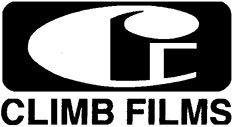

It was in the early 60’s, when Mandar Mullick started experimenting animation in his own small studio in Calcutta by building his own wooden animation stand and a Michel camera. In his studio he performed experiments in the area of advertising and animation films along with Ganesh Pyne, one of the notable contemporary artist of the Bengal School of art.
In Bombay, the Baptista-Vijayakar production unit, Hunnar Films was working on various animated ad films. Kantilal Rathod was in charge of its the cartoon unit with Shaila Paralkar working as one of the animators there.
In 1968, during a slack amidst the activities of the Film Division of India many animators like Ram Mohan, Suresh Naik, Praful and Satam left it to join the Madras-based, Prasad studios.
The famous film producer, director and actor L.V. Prasad was the founder of Prasad Productions - which offered services in feature films and advertisements. His son Ramesh headed it later. In 1976, they established Prasad Film Laboratories. The entire Indian film industry singled out Prasad studio for processing their films. His grandson Sai Prasad foresaw the dawn of digital future in India and in the late 1980’s the Prasad Group expanded and entrenched itself by starting the Prasad Video Digital and later Prasad EFX. Catering to the demanding needs of the digital cinema experience, it had telecine machines, film recorders and state-of-art scanners.
The Oxberry Animation Camera stand made a grand entry within their studio, after they decided to setup an animation department. It traveled all the way to Film Centre in Bombay, where Ram Mohan oversaw the department. Films like ‘Baap re Baap’, ‘You said it’ and a series like ‘Down to Earth’ were made there which won several accolades.
Another studio, which was doing some animation work for other independent filmmakers (like Satyajit Ray and Mrinal Sen) as Prasad was Rauko Studio of S.R. Rao.
Ram Mohan Biographics was established in 1972 in Bombay. Working majorly in the field of advertising, the studio also created sequences for noted films like Ray’s ‘Shatranj Ke Khiladi’ (1977) and B.R. Chopra’s ‘Pati, Patni or Woh’ (1978). It took off with a team of about 15 artists and the next 25 years only saw a small rise in the number of artists working here. This was probably because the field of animation was considered to be small and less challenging. After working on a series of commercials in 1992 they worked on a feature film ‘Ramayan: The Legend of Prince Rama’. This film was co-directed by Ram Mohan in collaboration with Yugo Sago from Japan.

Ram Mohan Biographics.

Ram Mohan with Yugo Sago from Japan.
The mid 90’s saw a rise in the number of people working at Ram Mohan Biographics as they had the opportunity to work on two TV series ‘Meena’ and ‘Sara’. These were an initiative by UNICEF to address discrimination against the South Asian girls and problems of adolescent girl in South Africa respectively. They initiated an apprenticeship that was taught by Ajit Rao. An interested change was perceived within these studios where you could work while learning, akin to the Indian Gurukul system.
Suresh Naik also started with his own studio called Cine Magic in 1979. The above-mentioned animated sequence from ‘Shatranj Ke Khiladi’ was shot here by Ram Mohan.
Our slow but steadily growing animation industry witnessed the opening of other animation studios like Gimmicks and Pictoreel Facet in Bombay.

Established in Bombay by Bhimsain Khurana – Climb Films was named after his successful animated film made in 1971. ‘The Fire’, ‘Locked’ and ‘Trade’, ‘Munni’ and the very popular ‘Ek, Anek aur Ekta’ are remarkable films made by them. Some were done in collaboration with the National Film Board of Canada during the late 90s.